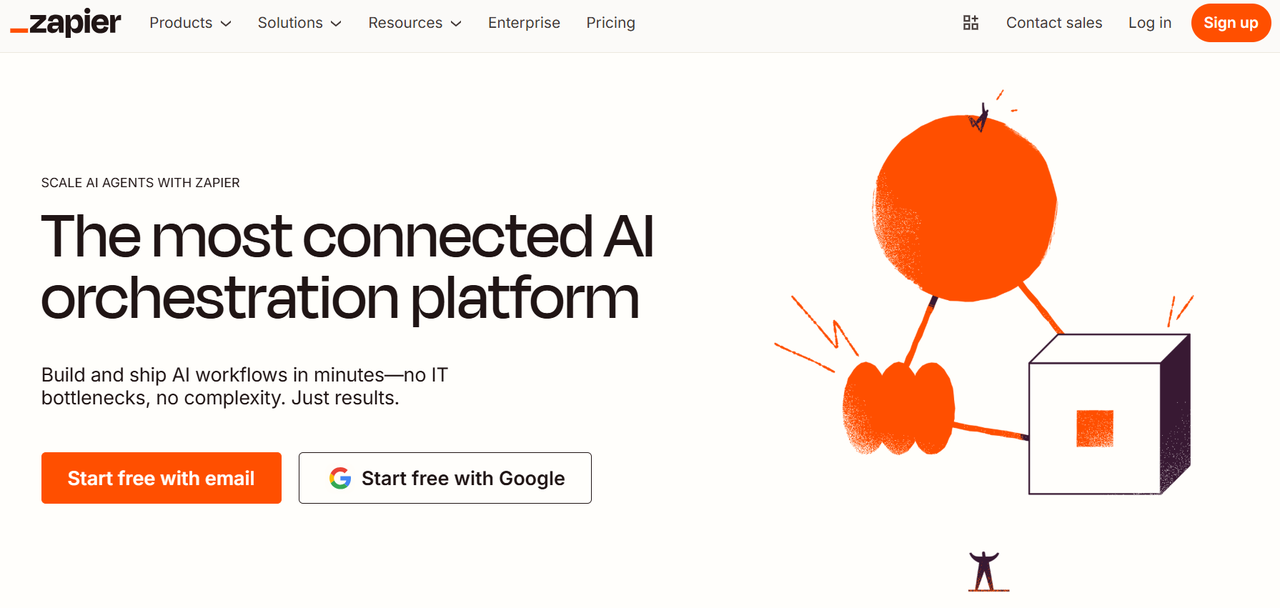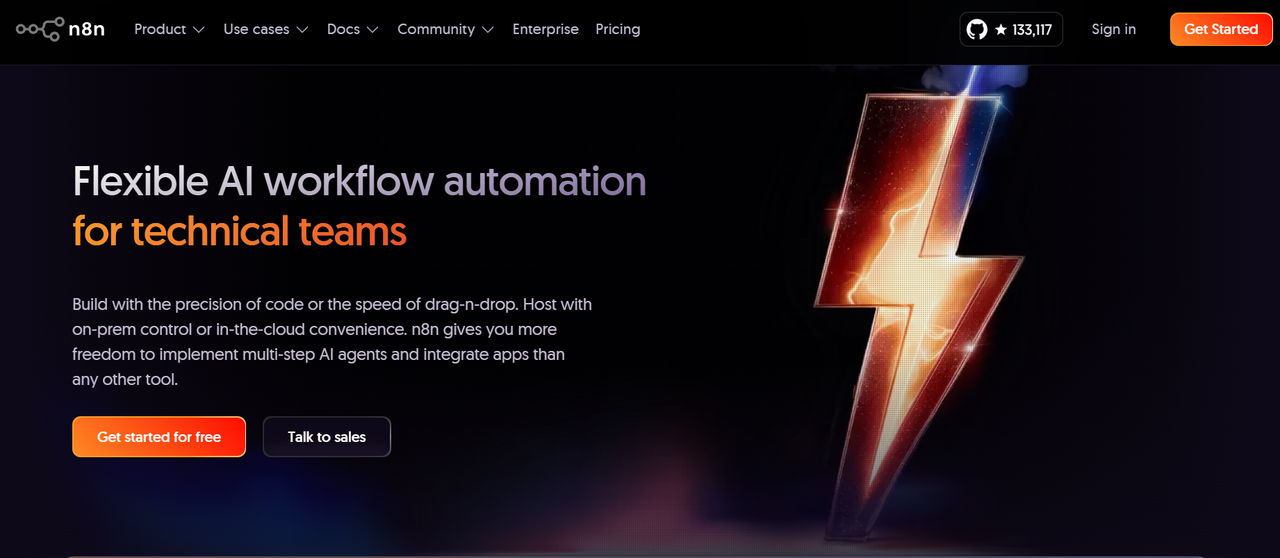In the world of workflow automation, Zapier has long been one of the most popular and mature solutions. Founded in 2011 by Wade Foster, Bryan Helmig, and Mike Knoop, Zapier was originally designed to help small and medium-sized businesses automatically synchronize data across different SaaS platforms.
Over more than a decade of development, Zapier has grown into a powerful ecosystem supporting 7,000+ app integrations, including Gmail, Slack, Notion, Salesforce, Google Sheets, and many other widely used tools. Today, it has amassed millions of users worldwide.
Thanks to its low-code visual workflows, extensive pre-built templates, and reliable cloud hosting, Zapier has become the go-to platform for many businesses looking to automate repetitive processes.
However, as business requirements become increasingly complex — especially around data security, AI integration, and flexible automation — more teams are turning to open-source alternatives that are self-hosted, customizable, and cost-efficient.
This shift is driven by some notable limitations of Zapier that many users have encountered:
1. Limited Flexibility
Even for seemingly simple automation tasks — for example, reading document content from Google Docs — Zapier often requires using Beta APIs or writing code to achieve the desired result.
2. High Cost, Yet a Frustrating User Experience
Zapier’s subscription pricing is relatively high, yet users frequently spend significant time troubleshooting errors, configuring workflows, and reading lengthy documentation. In addition, official support tends to be slow, leading to frustration.
3. The “No-Code” Promise Often Falls Short
Although Zapier markets itself as a “no-code automation platform”, once workflows become slightly more complex, users often still need to write Python or JavaScript code.
Whether your goal is to achieve greater flexibility, reduce costs, or gain full control over your data, more and more teams are considering open-source alternatives to Zapier.
In this article, we’ve selected 7 of the most popular open-source workflow automation tools among developers and enterprises. We’ve grouped them into three categories based on their strengths:
- General-purpose automation engines: n8n, Activepieces, Automatisch
- Data-driven automation platforms: NocoBase, Flowable
- Developer-friendly automation tools: Node-RED, Windmill
💬 Hey, you’re reading the NocoBase blog. NocoBase is the most extensible AI-powered no-code/low-code development platform for building enterprise applications, internal tools, and all kinds of systems. It’s fully self-hosted, plugin-based, and developer-friendly. → Explore NocoBase on GitHub
⭐ Looking for open-source alternatives to more SaaS platforms? Check out these articles:
- Top 7 OSS Airtable Alternatives Ranked by GitHub Stars
- Why Open-Source Alternatives Are Replacing OutSystems in 2025?
- 4 Powerful Open Source Alternatives to Salesforce (With Cost Comparison You’ll Love)
n8n — The Most Popular Open-Source Alternative to Zapier
Overview
n8n is a powerful open-source workflow automation tool and is widely regarded as the most popular open-source alternative to Zapier. It was launched by Jan Oberhauser in 2019, with the name “n8n” derived from “nodemation,” meaning node-based automation. n8n has an active open-source community and a rich ecosystem, currently boasting 133k stars on GitHub.
Compared to Zapier, n8n offers greater flexibility and control. Users can choose to use the official cloud-hosted version, or self-host via Docker on-premises or in a private cloud. It even allows running custom AI models, ensuring data privacy and security. This makes n8n particularly suitable for enterprises with high demands for automation, data protection, and cost management.
Key Features
- AI-Powered Multi-Step Automation: Integrate large language models (LLMs) seamlessly into workflows to quickly build multi-step AI agents. Whether calling OpenAI, Claude, or self-hosted models, it’s as easy as dragging and dropping nodes.
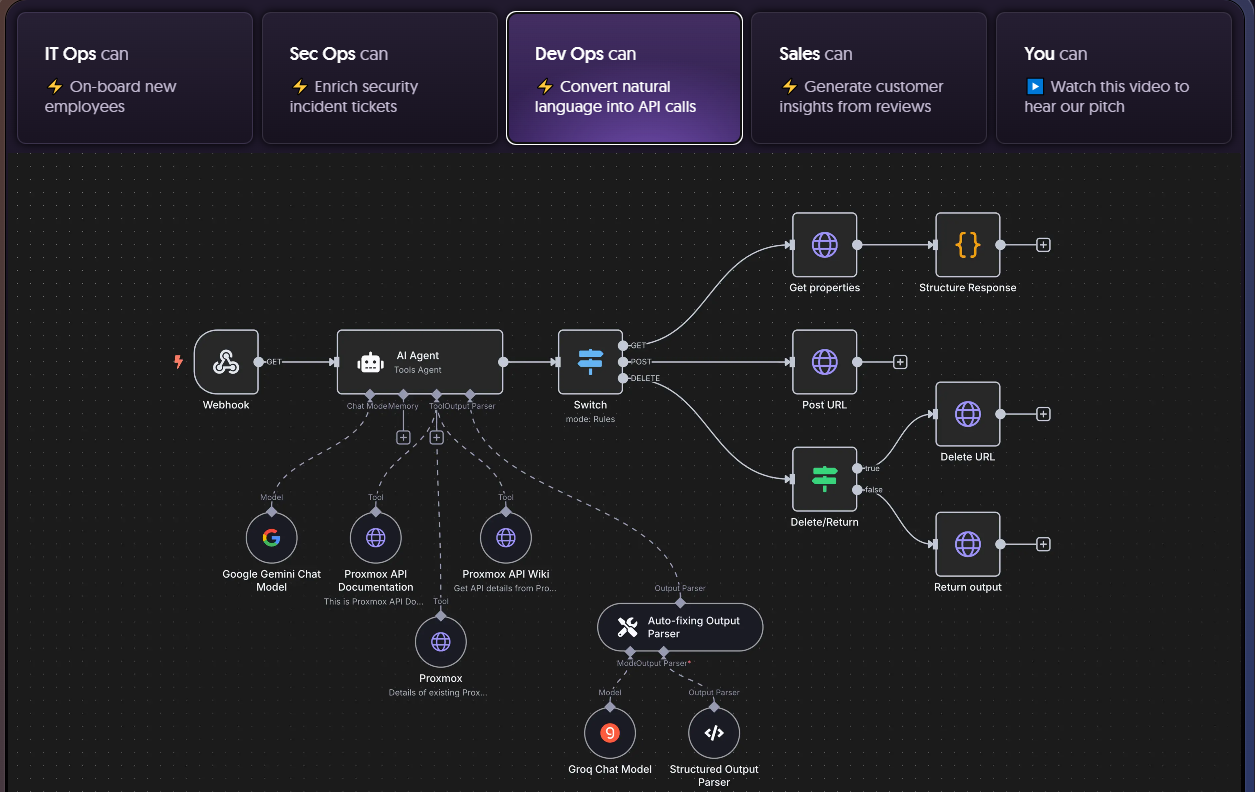
- Self-Hosting & Data Control: Users can fully control their data and AI models via Docker or source-based self-hosting, meeting enterprise privacy and compliance requirements. The official hosted version is also available for simpler deployment.
- Low-Code & Extensible: n8n offers a visual workflow designer and supports writing JavaScript or Python in any node. You can also import npm or Python libraries, providing far greater flexibility than Zapier for integrating complex systems and custom requirements.
Use Cases
- AI Agent Development: Quickly build multi-step AI agents for document summarization, automated customer support, report generation, and other intelligent applications.
- Cross-System Data Automation: Sync and process data across Slack, Teams, Notion, Google Sheets, MySQL, and more.
- Enterprise Workflow Optimization: Integrate CRM, ticketing, project management, and notification systems to automatically trigger tasks and messages, improving team collaboration efficiency.
NocoBase — Open-Source Low-Code/No-Code Platform
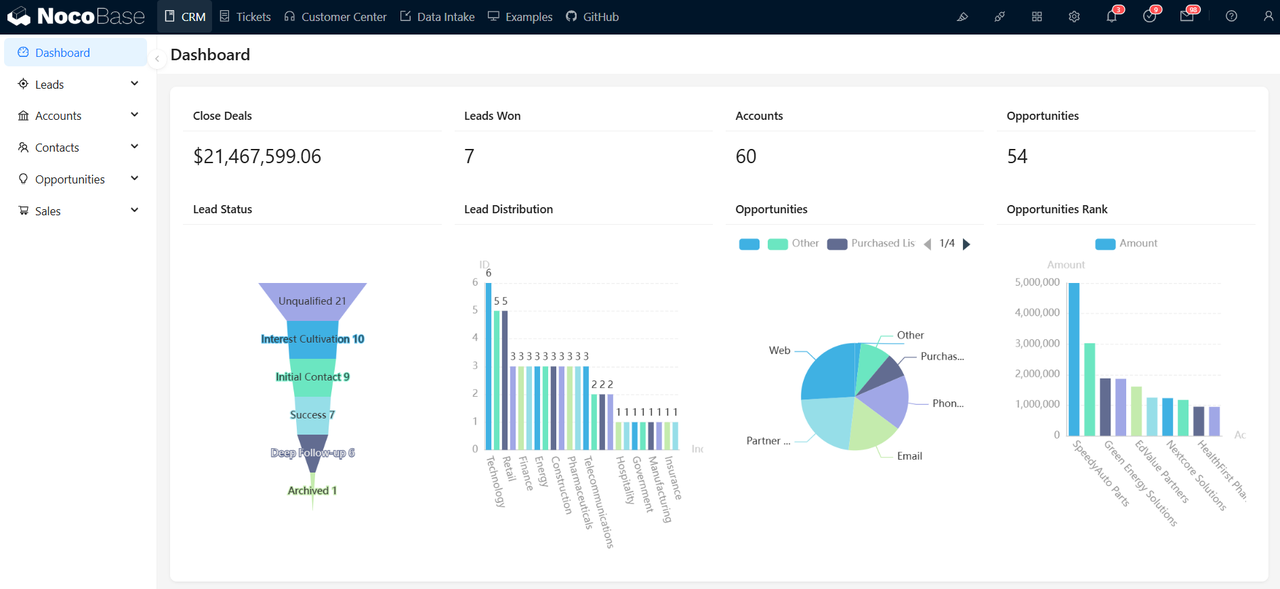
Overview
NocoBase is an open-source, self-hosted low-code/no-code development platform designed to simplify enterprise internal system development. It uses a data model-driven + plugin architecture, enabling rapid construction of complex business systems while maintaining high scalability and flexibility. NocoBase currently has 16.5k stars on GitHub.
Compared to Zapier, NocoBase provides higher flexibility and extensibility. Users can customize functionality through the plugin system to meet specific business needs. It also supports self-hosted deployment, ensuring data security and privacy.
Key Features
- Workflow Automation: NocoBase provides a robust workflow engine supporting triggers, conditional logic, loops, and custom actions. Workflows can be directly linked to underlying data and support complex multi-table relationships and conditional controls for more flexible and efficient process design.
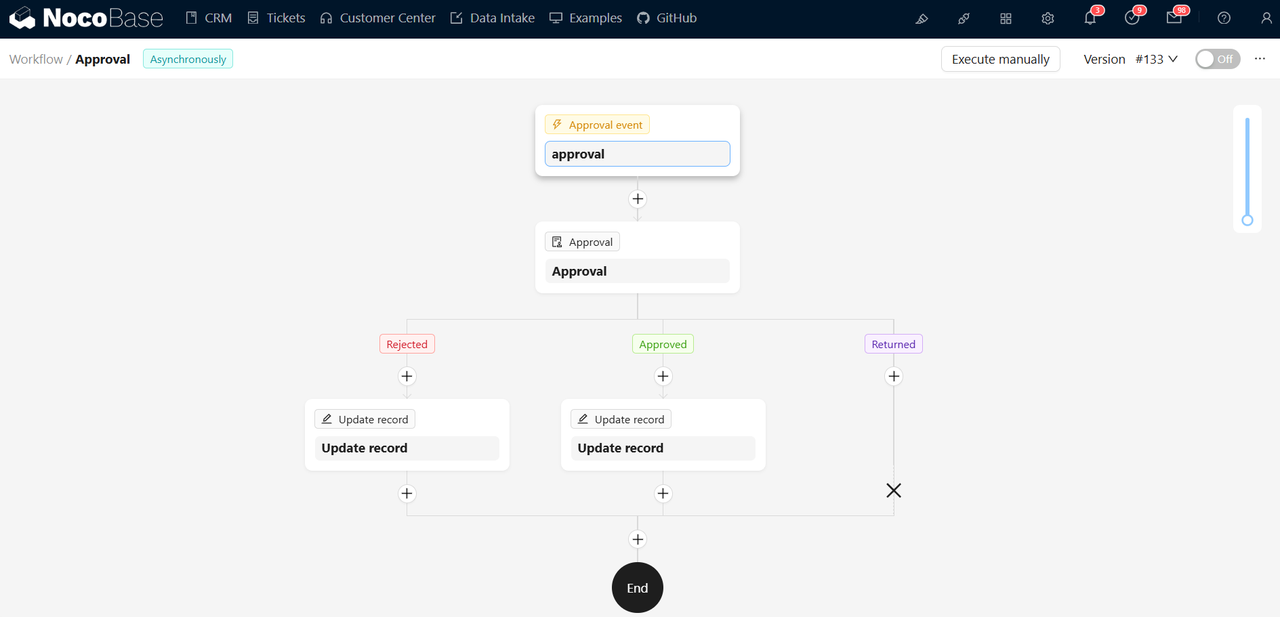
- Data Model-Driven Design: NocoBase generates operation interfaces and workflow nodes based on defined data structures and field relationships, enabling more intuitive and data-centric automation.
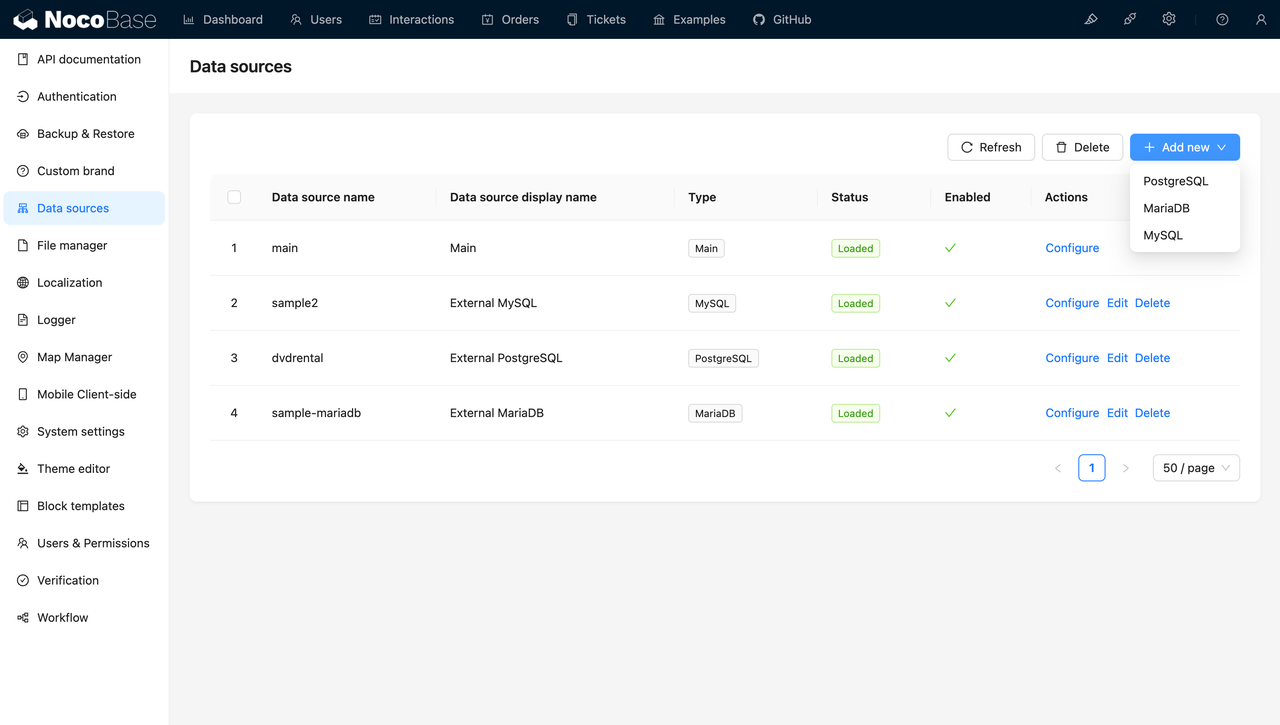
- Plugin-Based Extensibility: Built on a microkernel architecture, NocoBase offers a rich set of workflow and automation plugins, enabling seamless integration with third-party apps and services for complex cross-system automation tasks.
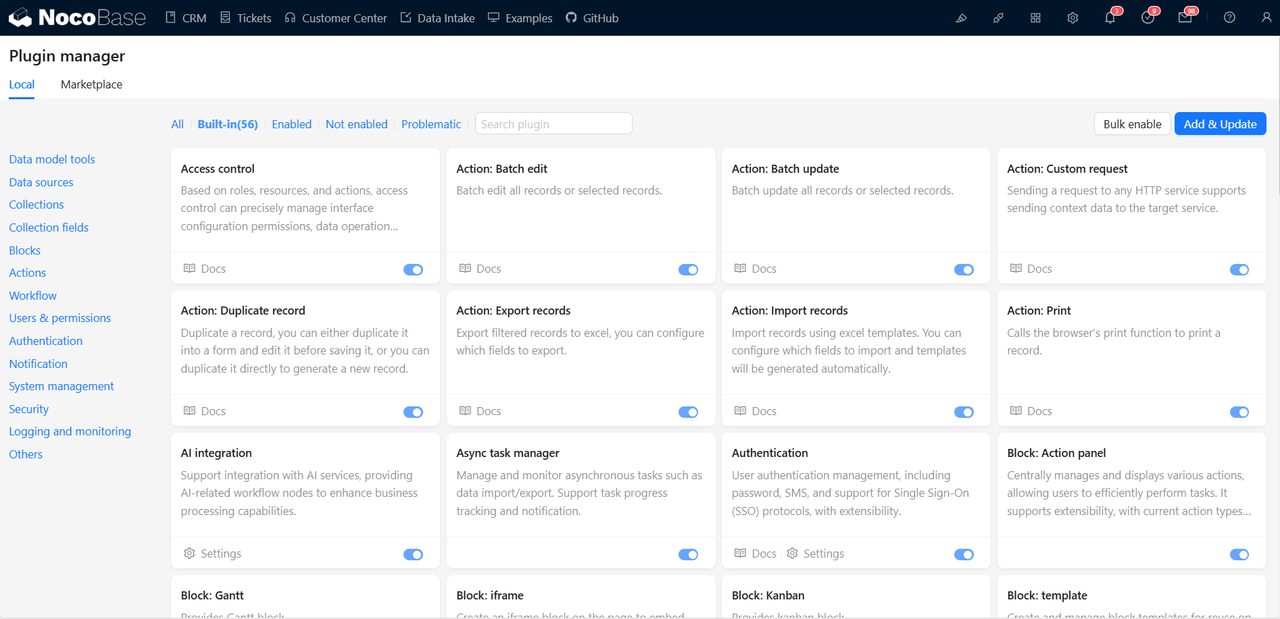
- Visual Builder Interface: Provides an intuitive visual interface, allowing users to configure triggers, data flows, and execution logic without coding, lowering the barrier to workflow automation.
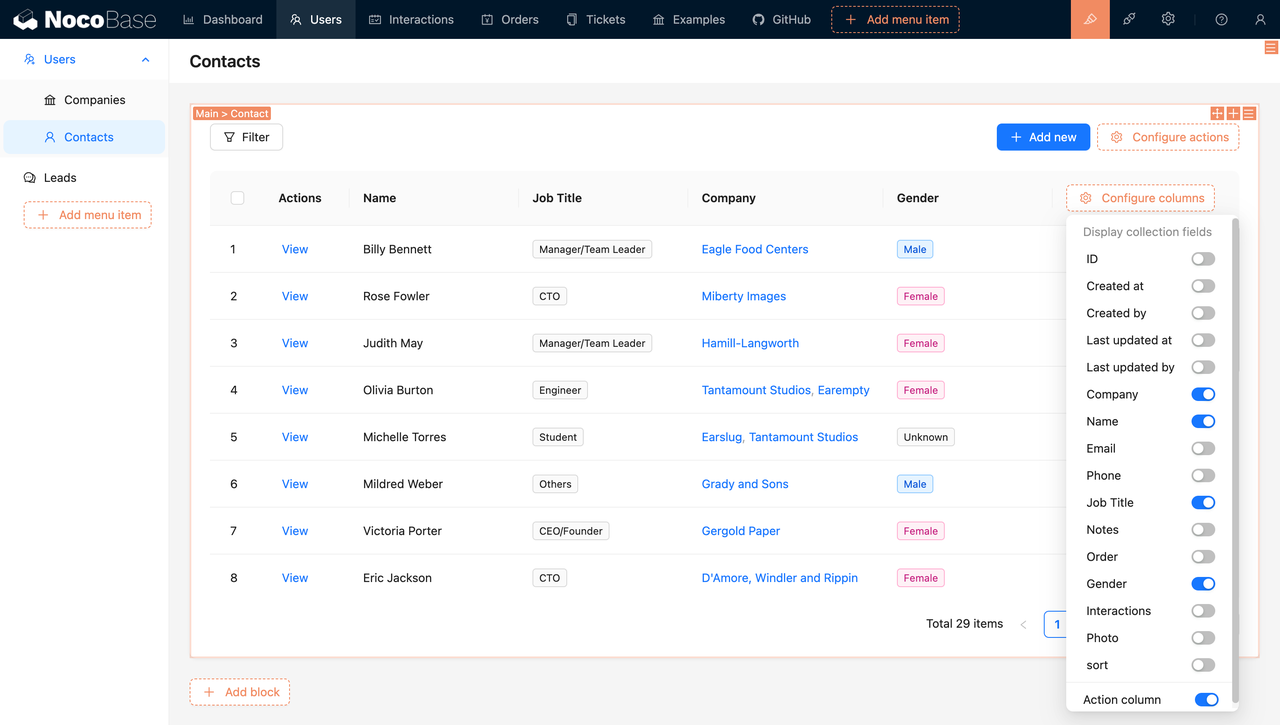
Use Cases
- AI-Powered Business Processes: Integrate LLMs in CRM, customer support, or BI systems for automated analysis, prediction, and report generation.
- Multi-System Data Sync: Seamlessly connect ERP, CRM, project management, and data warehouse systems to maintain consistent data.
- Internal Process Automation: Automate approval flows, task assignment, and notifications to improve team collaboration efficiency.
Activepieces — AI-Powered Automation Tool

Overview
Activepieces is an AI-powered automation platform designed to simplify workflow creation and management through a visual interface and AI integration. The project currently has 16.5k stars on GitHub.
Compared to Zapier, Activepieces offers advanced AI integration, allowing users to automatically generate workflows and simplify complex tasks. It also provides flexible customization, supporting connections with various applications and services.
Key Features
- AI-Powered Automation: Create intelligent AI Agents that can access 300+ built-in tools and collaborate with humans, significantly lowering the automation barrier across multiple applications.
- Visual Workflow Designer: The simplest drag-and-drop canvas (Flows) allows workflow creation without coding, supporting conditions, loops, webhooks, HTTP requests, and custom scripts.
- Enterprise-Grade Control: Provides versioning, automatic retries, custom templates, and white-labeling, ensuring data security and scalable enterprise deployment.
Use Cases
- AI-Driven Automation: Customer support automation, business collaboration, and other AI agent use cases.
- Internal Team Automation: Approval flows, task notifications, and data synchronization.
- Sensitive Data & Privacy: Self-hosted deployment to fully control data and access permissions.
Node-RED — Visual Low-Code Workflow Tool

Overview
Node-RED offers a browser-based graphical flow editor for orchestrating hardware devices, APIs, and online services. The project currently has 21.8k stars on GitHub.
Compared to Zapier, Node-RED focuses on flow-based programming and IoT applications, emphasizing visual orchestration and self-hosting. It also provides lower-level control and a rich community node library beyond typical SaaS automation.
Key Features
- Extensible Node Ecosystem: Thousands of community-contributed nodes integrate MQTT, HTTP, databases, devices, and more for complex automation.
- True Low-Code Drag-and-Drop: Build flows visually; non-technical users can quickly get started while advanced users can add JavaScript function nodes for customization.
- Self-Hosting & Edge Deployment: Deploy locally, on private cloud, or on edge devices (e.g., Raspberry Pi) to meet IoT and privacy-sensitive requirements.
Use Cases
- IoT & Edge Automation: Monitor device data and trigger notifications or multi-system responses.
- Cross-Platform Integration: Combine APIs, message queues, databases, and webhooks into unified workflows.
- Rapid Prototyping & Internal Tools: Build internal dashboards or automation demos for teams.
Windmill — Multi-Language Script-Driven Workflow Platform
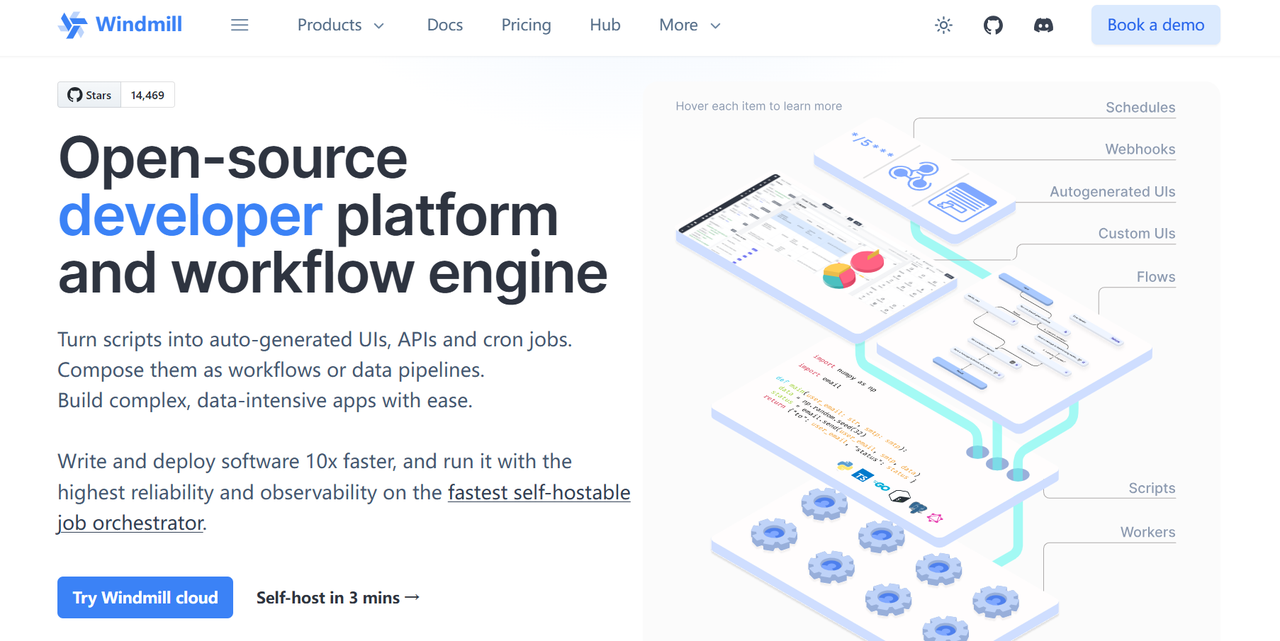
Overview
Windmill is an emerging open-source development platform supporting scripts, webhooks, UI, and workflow automation, aiming to replace commercial tools like Retool and Temporal. The project currently has 14.5k stars on GitHub.
Compared to Zapier, Windmill emphasizes scripting capabilities and infrastructure automation, supporting TypeScript, Python, Go, and Shell for more flexibility and extensibility than Zapier’s drag-and-drop model.
Key Features
- Multi-Language Script & UI Support: Combine scripts (TypeScript, Python, Go, Bash) with visual workflow design, balancing efficiency and flexibility.
- High-Performance Workflow Engine: Rust-based engine ensures efficient execution of both short and long-running tasks in self-hosted environments.
- Enterprise Security & Multi-Tenancy: Features nsjail sandboxing, encrypted secret storage, and tenant isolation for large-scale deployments.
Use Cases
- Infrastructure Automation: Scripted deployment, API scheduling, and cron tasks.
- Data ETL & Backend Jobs: High-performance scripting for database, API, and batch tasks.
- Developer & Team Workflows: CI/CD-style automation with Git-based workflow management.
Automatisch — Simple & Efficient Automation Tool
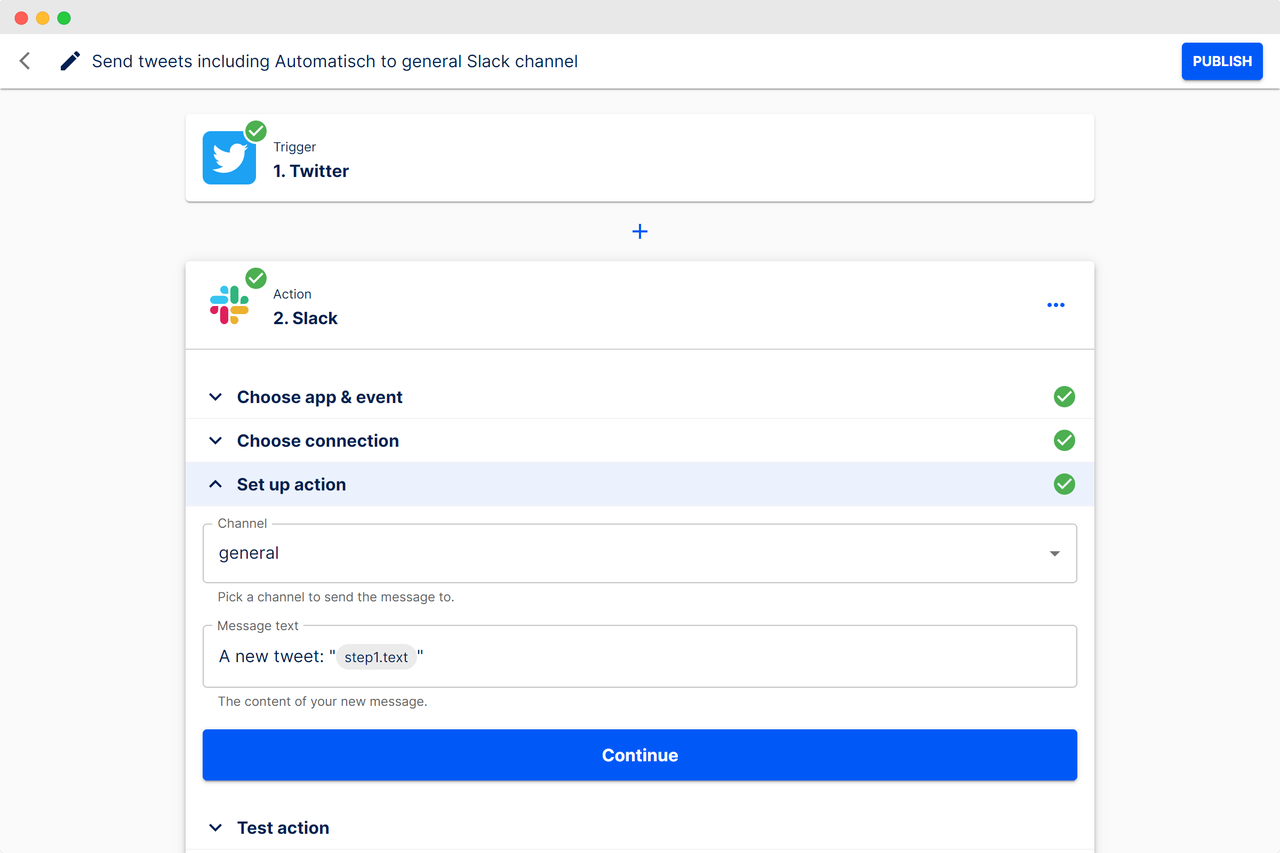
Overview
Automatisch is an open-source business automation tool designed to help users create and manage workflows with a simplified interface. The project currently has 13k stars on GitHub.
Compared to Zapier, Automatisch offers a simplified UI and is ideal for beginners and non-technical users. It also supports self-hosted deployment, ensuring data security and privacy.
Key Features
- Open Source & Self-Hosting: Fully open-source, with options for official cloud hosting or self-hosting, avoiding reliance on third-party SaaS platforms.
- Data Privacy & Compliance: Keep sensitive data locally to comply with GDPR, HIPAA, or other regulations.
- Avoid Vendor Lock-In: Open-source nature gives full control over technology stack choices without being constrained by a single vendor’s pricing, features, or data policies.
Use Cases
- Compliance-Oriented Automation: GDPR, HIPAA, and other privacy-sensitive workflows.
- Enterprise System Integration: Safely connect CRM, ERP, BI, and other core systems for low-cost automation.
- Industry-Specific Applications: Healthcare, finance, education, and other data-sensitive sectors requiring high-security workflows.
Flowable — Enterprise-Grade BPM & Workflow Management

Overview
Flowable is a Java-based open-source business process management (BPM) and workflow automation platform, originally derived from the Activiti project and independently developed by the core team in 2016. Flowable adheres to BPMN 2.0, CMMN, and DMN standards, helping enterprises design, manage, and optimize business processes. The project currently has 8.7k stars on GitHub.
Compared to Zapier, Flowable focuses on enterprise-level complex workflow automation, ideal for industries like banking, insurance, manufacturing, and healthcare, which require strict approval flows, decision rules, and data security.
Key Features
- BPMN 2.0 Support: Fully compliant with BPMN 2.0, offering visual process modeling and support for branching, parallel tasks, and rollbacks, suitable for highly customized enterprise scenarios.
- Multi-Model Integration: Supports BPMN workflows, CMMN (case management), and DMN (decision modeling) on a single platform.
- Enterprise Scalability: Rich REST API, Spring Boot integration, and event-driven architecture for seamless integration with ERP, CRM, and finance systems. Supports self-hosting for data security.
Use Cases
- Enterprise Approval Processes: Contract approvals, expense claims, leave management, project initiation.
- Rules-Based Decision Systems: Automate loan approval, risk assessment, pricing strategies using DMN business rules engine.
- Cross-System Orchestration: Integrate ERP, CRM, HR systems for unified management of multi-system workflows.
Conclusion
In the workflow automation space, Zapier remains one of the most feature-rich and mature platforms. However, for teams seeking lower costs, full data control, deeper AI integration, or highly customized automation, exploring open-source alternatives is increasingly valuable.
The seven open-source Zapier alternatives covered in this article — NocoBase, n8n, Activepieces, Node-RED, Windmill, Automatisch, Flowable — each offer unique strengths:
- NocoBase: Data model-driven + plugin architecture for highly flexible, customizable automation.
- n8n: Multi-step AI agent support with visual/code hybrid development, ideal for developers.
- Activepieces: AI agents, no-code automation, and team collaboration integration, perfect for enterprises managing workflows and data.
- Automatisch: Fully self-hosted, prioritizing data privacy and compliance for high-security industries.
- Node-RED: Visual node-based low-code platform for IoT, hardware control, and event-driven automation.
- Windmill: Combines workflow automation with a developer platform, suitable for unifying APIs, scripts, and database operations.
- Flowable: Enterprise-grade BPMN workflow platform for complex approval flows, rule-based decisions, and cross-system orchestration.
If you are looking for open-source alternatives to Zapier, these seven tools are a great starting point to explore and choose the solution that fits your business needs.
Related reading:
- 5 Best Open-Source Alternatives to ServiceNow (with Pricing Comparison)
- 6 Open-Source Firebase Alternatives for Self-Hosting and Data Control
- The Best Open-Source Alternatives to AppSheet in 2025
- Why Open-Source Alternatives Are Replacing OutSystems in 2025?
- 4 Powerful Open Source Alternatives to Salesforce (With Cost Comparison You’ll Love)
- The Best Open-Source Alternatives to Retool In 2025
